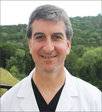How Common Is Revision Rhinoplasty?

Rhinoplasty (nose surgery) continues to be one of the most popular facial plastic surgery procedures in the world, with 213,780 procedures performed in the U.S. in 2018 (source). Rhinoplasty is a challenging surgical procedure that can significantly enhance one’s overall facial appearance. Of the many procedures being done each year, a certain number of patients will require a secondary revision procedure, called revision rhinoplasty.
Rhinoplasty Revision Rates
While numbers vary by study, one study published by the Aesthetic Surgery Journal found the average rate of rhinoplasty revision to be 9.8%. In another study which used a questionnaire to ask surgeons about their revision rates the majority of self-reported revision rates fell between 0% to 5%, although roughly 30% of respondents have revision rates between 6% and 10%.
Understanding revision statistics is important for any rhinoplasty patient. However, it’s also important to understand what revision rhinoplasty is and why it may be necessary. Here’s an overview of revision rhinoplasty, including some tips on how to avoid the need for a revision.
What Is Revision Rhinoplasty?
Revision rhinoplasty (or secondary rhinoplasty) is a surgical procedure to correct an undesired outcome that persists or develops from the original nose surgery. It’s a procedure done to correct either the appearance or functionality of the nose following an initial rhinoplasty surgery.
Revision rates are dramatically higher for less experienced surgeons. However, it’s important to understand that all rhinoplasty surgeons, regardless of experience and expertise, will have some rate of revision. This is due to the complexity of the procedure; often unanticipated obstacles become apparent after the surgery has begun. Additionally, complications can arise during the healing process.
Why Patients Seek Revision Rhinoplasty?
Many patients seeking revision rhinoplasty do so for strictly cosmetic reasons. Some of these patients may feel the results they received are too unnatural or not in harmony with their other facial features. Some wanted more done than what their surgeon did. Still others have new deviations, bumps on their tip or other irregularities that occurred during the healing process. They seek additional treatment to achieve a better cosmetic result.
Some patients seek revision surgery for a functional reason. Post procedure, they may suffer from new or under-corrected nasal obstruction after primary rhinoplasty. These patients may need functional nasal surgery, which may include septoplasty, nasal valve repair or inferior turbinate reductions.
Tips: Avoiding a Revision
Obviously, the goal of any patient and their surgeon is to avoid the need for any revision procedure. Here are a few ways to reduce your chances of needing a revision:
- Select a surgeon certified by the American Board of Facial Plastic & Reconstructive Surgery (ABFPRS) or the American Board of Plastic Surgery (ABPS).
- Make sure your surgeon has an abundance of experience performing rhinoplasty.
- Make sure your surgeon takes their time evaluating your nose and you understand what the plan is. Evaluations of the nasal airway are mandatory to insure no land mines exist that may compromise function postoperatively.
- Ask what issues may arise during surgery and what their contingency plan is
- Ask what the surgeon’s revision rate is. Ask if there are additional charges if a revision is needed.
- Make sure to provide your entire medical history, along with any nose related issues you’ve experienced. Today Quality of Life evaluation surveys exist to help quantitate the degree your nasal obstruction affects your life.
- Work with your chosen surgeon to fully understand what results are and are not possible through Rhinoplasty. Many experienced rhinoplasty surgeons use photo imaging software to help predict what result is possible and desirable.
- Follow all post-operative instructions during the recovery process. Remember final results in rhinoplasty do not occur until after at least one year of healing.

I had a nose job about 10 years ago to lessen my bulbous nose. There was no bump. I’m not happy with the results as it is still quite bulbous and pug like. I’d like it thinner, more refined and a bit longer. My mother has had several procedures done at WD and has been thrilled with the results. I currently live in Spain, but would like to come back to have the procedure done at your facility. I know a consultation will be necessary, but could you give me an estimate of the cost? There are no functional problems with my nose. This is purely aesthetic.
Hi Ellen,
Thanks for reading our post and for your comment. We are sorry to hear about your unhappiness with the result. I have forwarded your email to our consultants who will be in touch. We should be able to provide a basic cost estimate with more information.
Thanks
WD Staff
In general, the most cosmetic surgery includes removing old skin, new layers can grow in its place resulting in a brighter, clearer, more youthful looking complexion.